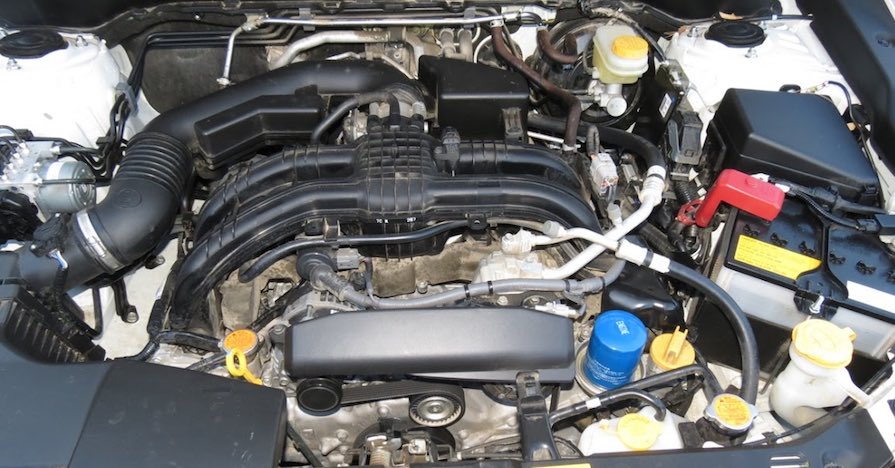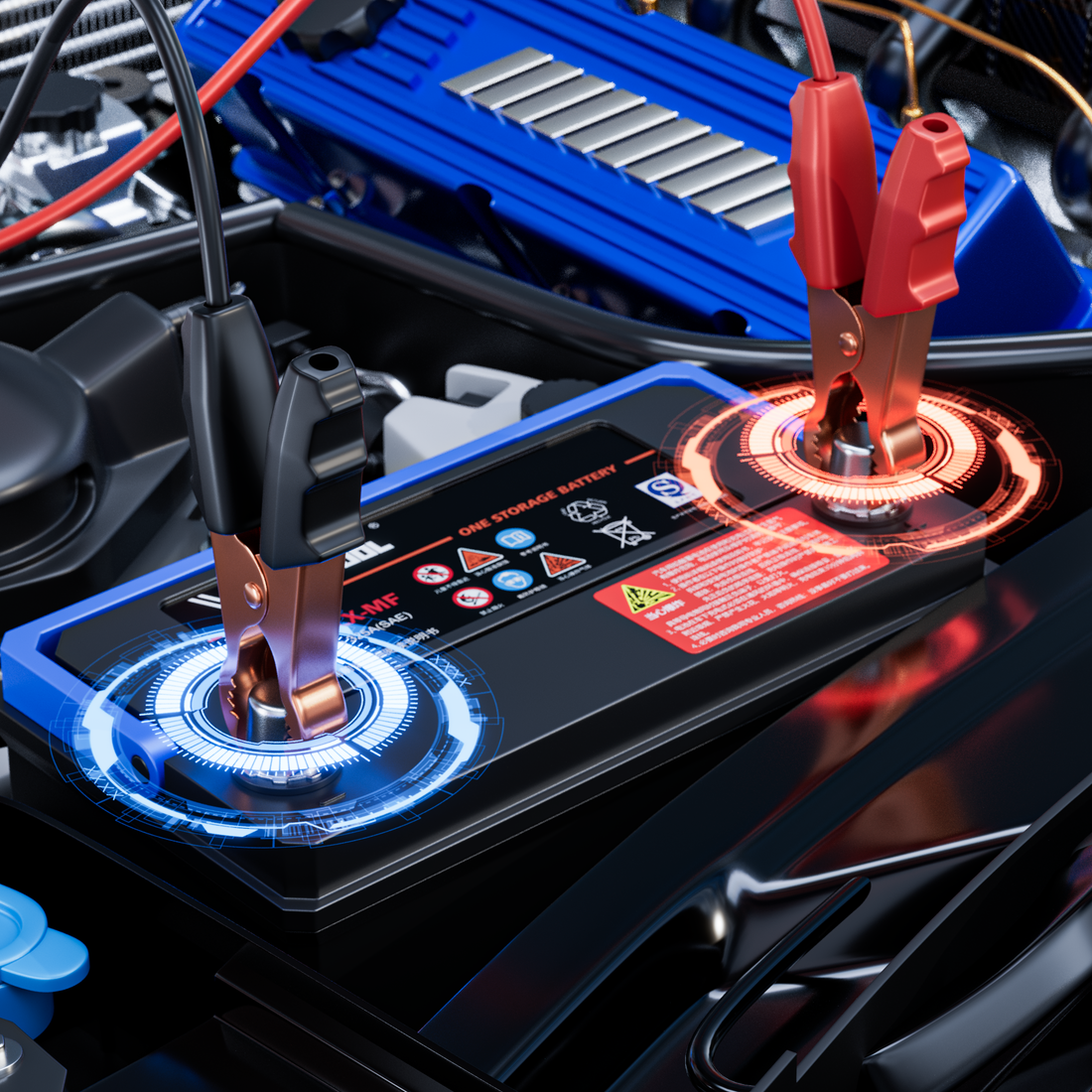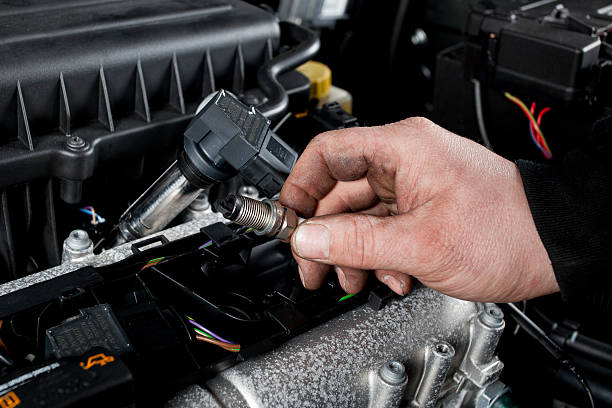News
5 Essential Skills Every Young Car Enthusiast Needs to Become a True Gearhead
Novice car fans know several things about most any vehicle, including the engine size, transmission, suspension tuning, horsepower and torque. The more dedicated among them can work a manual transmission or head off-road and cite a vehicle’s approach, breakover and departure angles. Yet, there are certain essential skills young car enthusiasts should master in their quest to earn the coveted gearhead mantle. Before you get too taken with your favorite car’s complexities, make sure you can do these five things. 1. Master Simple Car Care Every driver — regardless of age, wealth or gender — should know how to handle certain car maintenance basics. These serve as the foundation for understanding both the way your vehicle works and, importantly, how to handle simple tasks at home. To begin, drivers should check their tire pressure monthly, ensuring that there’s sufficient air in each, including the spare. A tire gauge is an essential tool for every car owner. Next, pop the hood and familiarize yourself with the various fluids present. Inspect the coolant level, topping off the reservoir as necessary. Check the oil, transmission and brake fluid levels. Finally, fill the windshield washer fluid. Other basic tasks include examining and changing wiper blades as needed and checking the battery’s condition with a multimeter, replacing it before it dies. Every car owner should also know how to change the oil and filter, as well as how to safely dispose of the oil filling your drip pan. 2. Change and Rotate Tires You already know about checking tire pressure, but what about tire condition? This requires you to look for signs of wear — blistering, cracking and breaking — and replace the tires when they’re worn. In the meantime, learning how to change a tire is essential and will ensure that you’re never stranded due to a flat. You need a jack, lug wrench and a fully inflated spare to get this job done. It’s also a good idea to learn how to rotate tires, understanding the differences between directional and nondirectional tires and whether to rotate the spare in or not. 3. Replace Lights Light bulbs burns out eventually. Familiarize yourself with the general workings of your vehicle’s electrical system, beginning with the fuse panel. When a bulb burns out, turn to your owner’s manual for guidance. Identify the bulb type before you purchase a replacement. 4. Jump a Vehicle If you can swap out a car battery, you can jump-start a vehicle. A set of booster cables is an essential part of your car emergency kit. You do have a kit, right? With both vehicles off and the parking brakes engaged, attach the red (positive) clip to the positive terminal for one battery, then do them same for the other battery. Next, attach the black (negative) clip to the first vehicle’s negative terminal, then ground the cable on an unpainted surface of the second vehicle. Start the working vehicle first and allow it to run for a minute, then start the second car. This is the battery tester kit from our store: BT500 5. Change Brake Pads You’re already familiar with tire care, so understanding basic brake care makes sense. You’ll need hand tools and torque drivers, as well as new pads, brake fluid, a cleaner, grease, a drip tray, clamps and a bleeder tool. The steps are involved, so you may find performing your first brake job with someone experienced in the art is the best approach. Does everyone want to graduate from young car enthusiasts to full-on gearheads? If so, ensure you can do basic maintenance yourself before wading into more difficult projects. Get the hang of it, and you may find that your passion could lead to your career choice as an automotive technician.
Kom meer te wetenHow Many Parts are in a Car?
How Many Parts are in a Car? There was a time when automobiles were simpler and didn’t have lots of parts, but modern cars have a vast number of parts, including all sorts of electronic components for powering high-tech accessories. But just how many parts are in a car? How about a bike or an airplane? Let’s work our way up from the simplest to the most complex to see just how many bits and pieces are working to get you where you’re going. Bicycles Bikes are less complex than other forms of transportation, but they do have plenty of moving parts, some of which are quite small. Sure, there are big parts like the tires, chain and handlebars, but there are also small parts that connect everything together. Less expensive kids’ bikes don’t have as many parts as what professional or off-road cyclists ride, but you can expect to find roughly 900 parts on the average bicycle. Cars Cars are more complex, with many parts you can see and many more that are completely concealed. Just think about all the stuff inside a door alone: It hides parts to control the windows, locks, side mirrors, plus all of the bits for the door latches and handles. There’s a lot going on in a car, and it’s not just in the engine compartment. Add in plenty of wires, harnesses, and clips for all the electronics and engine parts, as well as all of the hoses, clamps, belts and bolts. The exact number of parts in a car varies widely from car to car, but what’s the average? Typically, you can expect that there are about 30,000 parts in your car, from the tiniest nuts and bolts to the engine block. This is just a rough figure, so your car will likely have more or less. Note that the determining factor isn’t always the size of the vehicle. For instance, a bare-bones work van will have fewer parts to it than an up-market coupe with all the techy options and luxury add-ons included. Electric Cars Much is the same between an electric car and a gas-powered car in terms of components. They still need four wheels, tires, brakes, and all the cabin appointments and creature comforts one would expect, but the powertrains are where the two types diverge. A typical internal combustion engine has around 200 parts that need to be maintained and possibly replaced if they wear out. An electric vehicle takes that number down to around 20 parts. These figures don’t even factor in the transmission, a complex and expensive system that most electric vehicles skip altogether. In general, with far fewer moving pieces, it can be much cheaper to maintain an EV than it is to keep a vehicle with an internal combustion engine in working order. When you look at the whole EV, the total number of components can be tricky to pin down, as you can count the cells in a battery as parts, and the number of those in a given vehicle can be anywhere from a few hundred to thousands. There’s no simple answer since it all depends on how you break down the individual parts. Airplanes If you thought cars were complicated, they’ve got nothing on airplanes. The bigger the plane, the more parts it has, so the amount can vary widely. To make things fun, we’ll use the example of the Boeing 747, a full-size jumbo jet. How many parts have to work to take off in a plane this big? The answer is roughly six million individual parts. Suddenly, that 30,000-part car looks relatively simple.Next time you’re frustrated with mechanical troubles or stuck paying a bill for repairs, just remember how many parts go into even the simplest of vehicles. It stands to reason that parts break or wear out eventually. Because of everything going on under the hood and everywhere else, staying in tune with your vehicle and committing to regular maintenance is essential to keeping your ride on the road.
Kom meer te wetenHow to Use a Circuit Tester
How to Use a Circuit Tester Automotive electrical problems are never fun to diagnose. But getting down to the fundamentals can be a good place to start. Finding out if a circuit is even receiving power can help rule out other problems. A circuit tester is a handy tool that can indicate if a circuit is being powered. Here’s how to use a circuit tester and how to find the right one for your needs. What Is A Circuit Tester? A circuit tester is nothing more than a portable electrical circuit designed to be easily connected temporarily to a power source and a ground. It helps you see (or hear) the presence of electricity in a wire. There are several kinds of circuit testers for different kinds of diagnostic needs. The most basic and common circuit tester type looks like a screwdriver with a sharp pointed tip. Inside the handle is a light source (bulb or LED). At the end of the handle will be a cord with a clamp of some type to allow for temporary connection to the battery. A simple tool but well worth having when the situation calls. Getting To Know The Circuit Tester A simple circuit tester is easy to use. Familiarize yourself with the tool by doing a simple test of the battery. Connect the circuit tester ground clamp to the negative terminal of the vehicle battery. Now touch the probe tip of the circuit tester to the positive battery terminal. The light in the circuit tester handle should illuminate. When electricity is flowing through a circuit that you are testing, this is what you will see. Now that you know what to expect let’s look at a real-world example. Example: Testing A Trailer Wiring Connector Trailer wiring gets a bad reputation, but making sure you have power at the 4-pin trailer connector is a good starting point for diagnosis. Start by connecting the circuit tester ground clamp to the vehicle frame or chassis. The battery is grounded to the chassis, so the function is the same. Turn on the vehicle and switch on the turn signal (left or right) to supply power to the trailer wiring plug. The turn signals on the vehicle itself should be blinking for this test. Insert the circuit tester probe tip into each of the trailer wiring plug connectors one at a time, watching to see if the circuit tester light illuminates at the same time as the turn signal lights on the vehicle. The circuit tester light should pulse with the vehicle turn signal lights when you find the right trailer wiring plug connector. If the circuit tester does not light up at any point, try changing the ground clamp connection to a different chassis location, or even the exhaust pipe then probe the connections again. Once you have verified that power is reaching the left or right turn signal connector of the trailer plug, you can move on to other circuits. If you don’t find power, make a note of it and move on to the next step. Turn on the vehicle headlights to test the tail light/side marker circuit. Finally have a friend press the brake pedal to test the stop light circuit. For a 4-pin trailer connector there should be one ground wire and three power wires. You should find power at all three power wire connectors during testing. If you find power at one wire and not another, then you will need to do a deeper dive into the vehicle’s trailer wiring harness. Circuit Tester Types There are many types of circuit testers from simple to complex. Here’s a few you might run across in the automotive world. Standard Circuit Tester – This is about as basic as it gets. A probe, a light, and a cord. Nothing fancy and pretty much unchanged for decades. They don’t cost much and are a no-brainer for adding to your toolbox. Multi-Function Circuit Tester – This type of circuit tester can test for more than just flowing current. It can indicate whether a connection is hot or if it is grounded. Typically it needs to be plugged into a power source of its own or connected to the battery. It is a step up from the basic circuit tester and actually uses a bit of electronic circuitry to work its magic. Circuit Tester Pliers – Sometimes it is just difficult to get a circuit tester probe into a tight space. For cramped work spaces you can use circuit tester pliers. These special pliers have a sharp pin in the jaws that can gently pierce the outside insulation of a wire for testing. There is also a normal sharpened probe tip that flips up normal circuit testing use. Digital Circuit Tester – Now you are getting into the high-tech realm of circuit testers. A digital circuit tester can test components, read out voltage levels, check continuity, check grounds, test relays, and more. Some even step up to complete kits with circuit tracing capability. While not cheap, if you spend any amount of time chasing electrical gremlins a digital circuit tester may be just the ticket. Trailer Circuit Tester – We’re throwing this one in just so you know about it since we talked about trailer wiring earlier. A trailer wire connector circuit tester simply plugs into the vehicle trailer plug and lights up to show which circuits are working. It is a specialty tool, but it does its one job very well. Now that you have an idea about what a circuit tester is and the different options available to you, your next electrical repair should be a bit less daunting.
Kom meer te wetenAdvanced Automotive Diagnostics Systems - From Diagnostics to Prognostics
Connectivity and the Internet of Things are changing the landscape of the automotive industry, and as these technologies are gradually implemented, there are a number of interesting areas of innovation. Remote diagnostics is one such area where technology is paving the way towards revolutionary new concepts of vehicle maintenance, including the use of artificial intelligence and deep learning neural networks to develop advanced prognostic systems.Research by industry analysts Technavio in 2017 forecasts that the global automotive remote diagnostics market will grow at a CAGR of 26.79% during the period from 2017 to 2024. This is indicative of the progression towards prognostics - or predictive diagnostics - and away from traditional diagnostics. Vdiagtool started to change from traditional diagnosis to predictive diagnosis in 2017. In recent years, many remote diagnosis products have been launched. The Drivers Behind Remote & Automotive DiagnosticsNew vehicles, complete with 100 or more ECUs, have become highly complex networks and this increases the pressure to develop more efficient tools and systems to effectively diagnose the ECUs. The current trends in legislation and functionality offer opportunity but also come with risk as complexity increases. However, services such as ADAS and eCall are already taking advantage of connectivity and the push towards autonomous driving will see further development of car-to-X communication. The huge increase in the amount of data gathered from the vehicle and the ability to process it offers a variety of benefits in terms of maintenance. One of these possibilities is vehicle diagnostics over the entire lifecycle, from engineering to manufacturing to after-sales. Technical experts could, for example, be based in a regional technical centre from which they could access data from an individual vehicle’s ECUs in order to diagnose faults. This information could be relayed to the service centre if local engineers are unable to diagnose locally.This, however, is just the tip of the iceberg in terms of innovation. The continuous monitoring of real-time data via a wireless network opens up a wide range of possibilities. Faults and problems could be determined in real-time and potential faults could be highlighted before they result in greater problems or damage. Drivers could be alerted to issues and directed to the nearest service centre, while information and diagnostics could be sent in advance to the local service centre so that they are prepared for the repair.The cyclical data collected from a large number of vehicles also enables the monitoring of ageing processes across a large sample and can instruct preventative maintenance. Some manufacturers are already utilizing over-the-air software updates, and with more sophisticated data analysis and diagnostics, this is an area which offers huge potential savings in terms of recalls and warranty repairs. The introduction of remote diagnostics services also reduces the gap in the value chain and allows manufacturers to communicate directly with customers to offer better services.Other driving forces behind remote diagnostic development include fleet management and MaaS (Mobility as a Service). For fleet managers, faster analysis of faults and issues leads to quicker action. This reduces downtime and means that vehicles can be repaired before problems escalate. Mobility as a service is gaining traction in large cities around the world as more consumers are moving away from ownership to shared services. Remote diagnostics will be crucial to passenger vehicle fleets which aim to provide a comprehensive and reliable service.
Kom meer te wetenA History of Spark Plugs
The history of spark plugs is traceable to the 1800s, although it isn’t certain who invented the first one. Edmond Berger, an immigrant from Togo, may have created a sparking plug in 1839. Unfortunately, it was never patented. While others had a hand in developing the spark plug, Robert Bosch was the one to perfect and patent the technology. More than likely, your personal vehicle has spark plugs, although diesel engines and electric cars certainly do not have them. History of Spark Plugs Before the spark plug came into use, manufacturers relied on other sources, such as car batteries, to generate ignition. However, tapping car batteries seriously depleted power and in some cases caused fires. The German inventor, Robert Bosch, developed the first functioning spark plug in 1901, then received a patent the following year. Today, spark plugs are a necessary part of the internal combustion, or gas engine, as they supply ignition for the combustion required to start these vehicles. On ignition, the air-fuel mixture travels to the engine cylinder where it’s ignited by the spark created by the spark plug. This is precisely what so many people before Bosch attempted, but only one individual saw it to a successful conclusion. Diesel engines don’t have spark plugs because they rely on the compression stroke to raise the air temperature in the cylinders ahead of injecting the fuel. Electric cars don’t use fuel at all, relying on complex battery systems to supply propulsion. As for your gas-powered vehicle, the spark plug may be small in number but it is mighty in deed. Without functioning spark plugs you aren’t going anywhere. Spark Plug Location Locating your spark plugs is as easy as lifting the hood and eyeing the engine. In vehicles equipped with a four-cylinder or engine, the spark plugs sit on the top or the side of the engine, all in a row. Cars with V6 or V8 engines typically have spark plugs evenly separated on each side of the engine. You’ll find one spark plug in each cylinder. In older vehicles, each spark plug connects to a spark plug wire, which connects the top of the plug with the distributor. In vehicles without a distributor, there are no wires. Instead, ignition is achieved by means of coil packs and toothed timing wheels spinning inside the crankshaft, which is a more accurate method than ignition points. The entire system is managed by a computer. Most modern vehicles do not have a distributor, therefore the latter arrangement is typically utilized. When Spark Plugs Fail Copper spark plugs typically last for 20,000 miles, while the platinum spark plugs found in most cars are usually good for 60,000 to up to 100,000 miles. Trouble signs include engine misfiring, rough idling, engine surge, lack of power when accelerating and decreased fuel economy. Your owner’s manual lists the maintenance intervals for spark plug replacement. Follow the guidelines and you’ll avoid trouble, including a possible breakdown. Check out all the electrical & ignition system products available on Vdiagtool Online or trust one of our 17,000 Vdiagtool AutoCare locations for routine maintenance and repairs. Photo courtesy of Pixabay.
Kom meer te wetenWhat is a Fuel Injector and How Does It Work?
If you're experiencing performance issues or suspect your vehicle's fuel injectors are malfunctioning, understanding their purpose, how they work, and the signs of potential problems can help you take the right action. 1. What is a fuel injector Fuel injectors are a key component of an internal combustion engine's fuel delivery system. They are designed to spray a fine mist of fuel directly into the engine's combustion chamber or intake manifold.Unlike older carbureted systems, fuel injectors can precisely control the amount and timing of fuel delivery, which can improve engine performance and reduce emissions.There are two main types of fuel injectors:Port fuel injectors: Deliver fuel to the intake manifold before it enters the combustion chamber.Direct fuel injectors: Spray fuel directly into the combustion chamber for better efficiency and power.Modern vehicles almost exclusively use fuel injectors. 2. How Fuel Injectors Work Fuel injectors are part of the high-pressure fuel delivery system. Here's a step-by-step guide to how they work:Fuel pressurization: The fuel pump delivers pressurized fuel to the injectors.Electronic control: The engine control unit (ECU) determines the precise time and amount of fuel required based on input from various sensors.Atomization: The injectors apply fuel as a fine mist through the nozzles, ensuring even mixing with the air for efficient combustion.Injection timing: Fuel is injected in short pulses to match the engine's needs, optimizing performance and fuel economy.This precision helps ensure a smooth-running engine, improved fuel efficiency, and lower emissions. 3. What is the purpose of fuel injectors Fuel injectors are integral to engine function and provide a variety of benefits:Optimal fuel delivery: Ensures the right amount of fuel reaches the engine at the right time.Improves fuel efficiency: Reduces waste by delivering exactly the fuel the engine needs.Reduces emissions: Helps comply with strict environmental standards by reducing emissions from unburned fuel.Enhanced performance: Helps with smoother acceleration and improves overall engine responsiveness.Without properly functioning fuel injectors, your engine will struggle to run efficiently, leading to performance and fuel economy issues. 4. What are the signs of a fuel injector failure? Fuel injector failure can lead to a host of issues, many of which can affect engine performance. Watch for the following signs:Engine Misfire or Rough IdleWhen the injectors are unable to deliver enough fuel, the engine may misfire or idle unevenly.Reduced Fuel EfficiencyFaulty injectors can cause too much or too little fuel to be injected, which can reduce mileage.Difficult Engine StartingIf the injectors are clogged or damaged, starting the engine may become difficult due to improper fuel delivery.Check Engine Light IlluminatesThe ECU may detect anomalies in the fuel delivery and trigger the Check Engine Light.Fuel SmellA leaky injector can cause a noticeable fuel smell around the vehicle. 5. Are fuel injector replacements expensive? The cost of replacing a fuel injector depends on several factors:Vehicle type: Luxury or high-performance vehicles often come with more expensive injectors.Number of injectors: Vehicles with multiple injectors may incur higher replacement costs.Labor costs: Replacing an injector requires removing parts of the fuel system, which can add to labor costs.Average costsFor most vehicles, replacing a single fuel injector costs between $200 and $600, including parts and labor.Replacing all injectors costs between $800 and $1,500, depending on the vehicle and the shop. Fuel Injector Maintenance Tips Proper maintenance can extend the life of your fuel injectors and improve engine performance. Here's how to keep your fuel injectors in good shape:Use high-quality fuelHigh-quality fuels often contain cleaners that help prevent fuel injectors from clogging.Clean your fuel system regularlyUsing a fuel system cleaner regularly can remove deposits and maintain injector performance.Change your fuel filterA clogged fuel filter can restrict fuel flow and overwork your injectors.Check for leaksCheck your fuel system for any signs of leaks, as these can cause injector problems. 6. When to fix it yourself and when to seek professional help Some fuel injector problems are simple enough that you can handle them on your own, especially when it comes to diagnosing and clearing error codes. More complex problems, however, often require expertise.Fix It YourselfIf the problem is related to an error code, you can fix the problem yourself with a reliable diagnostic tool like VDIAGTOOL VD70S, a car scanner diagnostic tool for reading and clearing codes.Read Error Codes: VDIAGTOOL VD30 Pro car code scanner helps identify specific injector-related error codes, such as injector circuit failures or fuel delivery anomalies. For example, the common injector error code P0201 (Injector Circuit/Open - Cylinder 1) can be quickly pinpointed.Clear Error Codes: Once you've fixed the cause (such as clearing a minor injector clog using a fuel system cleaner), VDIAGTOOL VD30 Pro lets you clear the code and reset your vehicle's ECU. This ensures that the system is functioning properly and prevents unnecessary warning lights from appearing.By using the VDIAGTOOL VD30 Pro Bluetooth obd2 reader, you can handle basic diagnostic and reset tasks without having to go to a mechanic, saving time and money.
Kom meer te wetenWhy doesn't my OBD2 port work when the fuse is good?
When your OBD2 port isn't working, figuring out what's wrong can be a hassle, even if the fuse isn't faulty. This guide will walk you through common causes, troubleshooting steps, and practical solutions to help you get your OBD2 port back online quickly and efficiently. Why is my OBD2 port not communicating? There could be a number of reasons why the OBD2 port is not communicating with the scanner. Here are some of the most common reasons: 1. Power supply problem The OBD2 port requires a steady source of power to work. Without power, your scan tool can't communicate with the car's electronic systems. Power problems can occur for the following reasons:A loose wiring connection.A blown secondary fuse that's separate from the primary fuse you checked.A problem with the car's battery, such as low voltage or a bad ground. 2. Damaged or worn OBD2 portOver time, the pins of the port may be bent, corroded, or misaligned. This can cause poor contact between the scanner and the port.3. Incompatible scannerSome low-end scanners may not support your vehicle's protocol, causing communication failure.4. ECU or CAN bus failureThe ECU (Engine Control Unit) communicates with the OBD2 port via the CAN (Controller Area Network) bus. If there is a problem with the ECU or CAN bus, the OBD2 port will not work properly. How to Diagnose Communication Problems Follow these steps to determine why the OBD2 port is not communicating:1. Check the ignition statusMake sure the key is in the ON or ACC position. Most OBD2 systems will not work if the ignition is off.2. Test the voltage at the OBD2 portUse a multimeter to test pin 16 (positive) and pins 4 or 5 (ground) on the OBD2 port. A reading of 12V (or close) indicates that the port has power.3. Verify the scannerTest the obd2 scanner using Bluetooth in another vehicle. If it works fine elsewhere, the problem is with your vehicle. If it does not work, the scanner itself may be defective. What causes the code reader to not work? Even if your OBD2 port appears to be working properly, the code reader itself may not function properly due to the following issues:IncompatibilitySome vehicles, especially those made by specific manufacturers, require a dedicated OBD2 scanner. For example, a basic scanner may not be able to read codes for advanced systems such as ABS (anti-lock braking system) or SRS (supplemental restraint system).Our VD70S diagnostic scanner is compatible with most vehicle brands and supports advanced system code reading, ensuring comprehensive diagnosis of vehicle problems.Connection IssuesA loose or incomplete connection between the code reader and the OBD2 port may cause problems. Make sure the car diagnostic scanner is fully inserted into the port.VD70 Lite products are equipped with high-quality plugs and anti-interference designs to ensure stable connection and reliable data transmission.Wiring ErrorsDamaged or frayed wires connected to the OBD2 port may interrupt communication between the scanner and the car's system. VD70 scanners are made of durable materials and are rigorously tested to avoid such problems, providing stable and long-lasting performance.Software or Firmware IssuesSome code readers may need to be updated to work with newer vehicles. Please check if the manufacturer provides firmware updates for your device.Our VD70S scanners support online firmware updates, ensuring they can easily cope with even the latest car models. Can OBD2 detect a blown fuse? The OBD2 system itself cannot directly detect if a fuse is blown. However, a blown fuse prevents power from reaching the OBD2 port, rendering it inoperable.You can confirm if the problem is a blown fuse by:Locate your vehicle's fuse box, which is usually located under the dashboard or in the engine compartment.Refer to your vehicle's manual to locate the fuse that controls the OBD2 port.Use a fuse tester or multimeter to check for continuity. If the fuse is blown, no current will pass through it.Even if the fuse appears to be intact, replacing it is a simple step that can eliminate the source of the problem. Which fuse controls the OBD2 port? The specific fuse that controls the OBD2 port varies from vehicle to vehicle, but is usually labeled "OBD," "DATA LINK," or something similar. In some cars, the OBD2 port shares a fuse with other systems, such as the cigarette lighter or interior lights.Common Fuse ProblemsAuxiliary Fuses: Some vehicles have additional fuses for their OBD2 ports hidden in less obvious locations, such as under the hood.Shared Circuits: If the fuse also powers other components, such as the radio or dome light, those components may also stop working. How to Replace a Fuse Remove the old fuse using a fuse puller or tweezers.Insert a new fuse with the same ampere rating.Test the VDIAGTOOL OBD2 port using a scanner. Preventing future OBD2 port problems To avoid similar problems in the future, follow these maintenance tips:Regular inspections: Regularly check the OBD2 port for signs of wear, corrosion, or debris. Keep it clean and free of damage.Use compatible tools: Invest in a high-quality scanner, such as the VDIAGTOOL VD70S, which supports multiple protocols and reduces the risk of miscommunication.Avoid low voltage: Before using an OBD2 scanner, make sure your car's battery is fully charged.Protect electrical components: Handle your car's wiring with care to avoid unnecessary strain on the electrical system.
Kom meer te wetenHow to properly remove stickers from your car
You just bought a used car and the previous owner put not one, not two, but six bumper stickers on the rear bumper and trunk lid. These stickers are ugly and do not reflect your outlook on life. Therefore, it is imperative to remove these stickers from your new car. When they are stuck on the bumper, on the glass, or inside the car, the following measures should be taken. How to remove them If you're lucky, removing a sticker from your car will be easy. Simply peel off one corner until the bumper sticker starts to peel off. Peel off all four corners and the sticker should be off in a matter of minutes.Unfortunately, not all bumper stickers are so easy to remove. The ravages of sun, air, dust and even time mean that it's nearly impossible to make progress without using one or more alternative methods.One common method for removing bumper stickers is to use a hair dryer. Set the hair dryer to "high" and slowly move it back and forth over the sticker. The heat will loosen the sticker for quick removal.Another method is to boil water and apply it directly to the sticker. Wait at least a minute for the water to penetrate and then begin topeel the sticker off your car. Vinegar is another method and is preferable, especially if you don't want to deal with hot liquids. You can spray the vinegar directly onto the bumper sticker or soak a cloth in vinegar and apply it directly. Wait five minutes and the sticker will be ready to go. Stickers on glass Stickers that are attached to glass, such as your rear windshield or windows, require a different approach. One of the easiest ways to remove stickers from car glass is to brush or spray cooking oil onto the sticker and leave it on for one to two hours. Once the oil has penetrated, the sticker will peel right off.You can also use a utility knife or razor to remove any residue, but be careful not to scratch the glass. Car interior But what if the sticker is on the dashboard or glove box? Some people do put stickers in weird places! Removing stickers from the interior of your car can be a difficult challenge.In most cases, dashboards are made of plastic, rubber, or other non-leather materials. You need to be extra careful, as the wrong solution can damage or discolor the surface. A soapy mixture of water and dishwashing liquid that remains on the sticker may be enough. Make sure to leave enough time for it to penetrate before peeling and removing.As for leather, be very careful here. Parts that cannot be peeled off with your fingers may come off with the detergent mixture. After removing the residue, apply leather conditioner generously to the affected area.
Kom meer te wetenWhere is my car battery?
You can’t leave your driveway without a battery. Since the average battery life is three to five years, you’ll have to deal with a bad or faulty battery at least a few times. Let’s say you need to start it one morning. You pop the hood and… what? It’s not there? “Where is my car battery?” is an important question, and the answer may surprise you. Leading the way The most common battery placement is indeed under the hood, but it's not the only option. When designing a new car, manufacturers take a variety of factors into consideration when placing the battery. First, with the technological advancements in our cars today, there's sometimes simply not enough room for traditional placement. They also consider overall weight distribution. The battery may not be the heaviest component, but it's not light as a feather either, and every little bit counts in order to balance the weight for optimal performance and control. Placement may also take temperature into consideration. Between the engine and the exhaust manifold, it can get pretty hot under the hood, and heat is the enemy of long battery life. Positive reinforcement So where is it located? Honestly, it could be anywhere. Sometimes the battery is still in the front of the car, but buried in the ground. It could be under the wheel, under the floor, in the rear, or even in the trunk. To be sure, consult your owner's manual. Luckily, if you only need a jumper cable, the manufacturer has probably designed an easily accessible jumper connection point, possibly under the hood (again, check your manual for the best information). Of course, if the battery is bad, you may need to remove the wheel or pull up the panel, but that shouldn't be too difficult. Remember to disconnect the negative battery cable first before connecting the cable to the jump start box to avoid disrupting the electronic system. Negative consequences There are a few things to note about battery placement, especially if you want to move your battery around or add auxiliary equipment. First, be aware that your battery is confined in a battery box or strapped to a battery tray. These leak-proof containers are necessary in case the battery starts to sweat or otherwise leak electrolyte or acid. It protects nearby components and is an environmental regulation. It is secured in place to minimize vibration – again protecting from damage, but also helping to prolong the battery’s life. The battery must also be placed in a well-ventilated area. If a battery gets hot, overcharges, or starts to corrode and release reactive gases on its surface, it is at risk of exploding, especially if the gases accumulate without ventilation. This rarely happens, but if it does, you don’t want to leave it in the back seat of your car.Finally, if you’re wondering “Where’s my car battery?” and can’t find it under the hood, don’t panic, it’s nearby. Better to read the manual now and know the exact location before an emergency search.
Kom meer te weten











